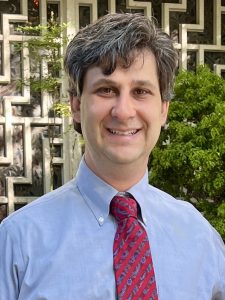Research interests
My research interests are large-scale tropical air-sea interaction, climate and climate variability, particularly El Niño-Southern Oscillation (ENSO), and seasonal to decadal forecasting.
Selected publications
- Zhang, C. A. F. Z. Levine, M. Wang, C. Gentemann, C. W. Mordy, E. D. Cokelet, P. A. Browne, Q. Yang, N. Lawrence-Slavas, C. Meinig, G. Smith, A. Chiodi, D. Zhang, P. Stabeno, W. Wang, H. Ren, K. A. Peterson, S. N. Figueroa, M. Steele, N. P. Barton (2021). Evaluation of Operational Forecasts at Alaskan Arctic Sea Surface Using in situ Observations from Saildrones. Monthly Weather Review, 150 (6), 1437-1455. https://doi.org/10.1175/MWR-D-20-0379.1
- Power, S. et al (2021). A Review of Tropical Pacific Decadal Variability. Science. 364, 9165. doi:10.1126/science.aay9165
- Fedorov, A, S. Hu, A. Wittenberg, A. F. Z. Levine, and C. Deser (2020). ENSO low-frequency oscillation and mean state interactions. In ENSO in a Changing Climate. eds. M. J . McPhaden, A. Santoso, and W. Cai. p 173
- L’Heureux, M., A. F. Z. Levine, M. Newman, C. Ganter, A. Levine, J J Luo, M. Tippett, and T K Stockdale (2020). Challenges in ENSO prediction. In ENSO in a Changing Climate. eds. M. J . McPhaden, A. Santoso, and W. Cai. p. 227
- Levine, A. F. Z., D. Frierson, and M. J. McPhaden (2018). AMO forcing of multidecadal Pacific ITCZ changes. J. Climate. 31, 5749-5764. doi:10.1175/JCLI-D-17-0810.1
- Levine, A. F. Z., M. J. McPhaden, and D. Frierson (2017). The impact of the AMO on multidecadal ENSO variability. Geophys. Res. Lett., 44, doi:10.1002/2017GL072524
- Levine, A. F. Z and F. F. Jin (2017). A simple approach to quantifying the noise-ENSO Interaction. Part I: Deducing the state-dependency of the windstress forcing using monthly mean data. Clim. Dyn. 48, 1-18. DOI 10.1007/s00382-015-2748-1
- Levine, A. F. Z., F. F. Jin and M. Stueker (2017). A simple approach to quantifying the noise-ENSO Interaction. Part II: The Role of the Warm-Pool Edge and Equatorial Zonal Wind Anomalies. Clim. Dyn. 48, 19-37. DOI 10.1007/s00382-016-3268-3
- Levine, A. F. Z. and M. J. McPhaden (2016). How the July 2014 Easterly Wind Burst Gave the 2015-6 El Niño a Head Start. Geophys. Res. Lett. 43, doi:10.1002/2016GL069204.
- Levine, A. F. Z., F. F. Jin and M. J. McPhaden (2016). Super Noise-Super El Nino: How Stochastic Forcing Creates Extreme El Nino events. J. Climate. 29, 54833-5499. Doi: 10.1175/JCLI-D-16-0091.1.
- Levine, A. F. Z. and M. J. McPhaden (2015). The annual cycle in ENSO growth rate as a cause of the spring predictability barrier. Geophys. Res. Lett., 42, doi:10.1002/2015GL064309.
- Levine, A. F. Z. and F. F. Jin (2010). Noise Induced Instability in the ENSO Recharge Oscillator. J. Atmos. Sci. 67:2010, 529-42.

